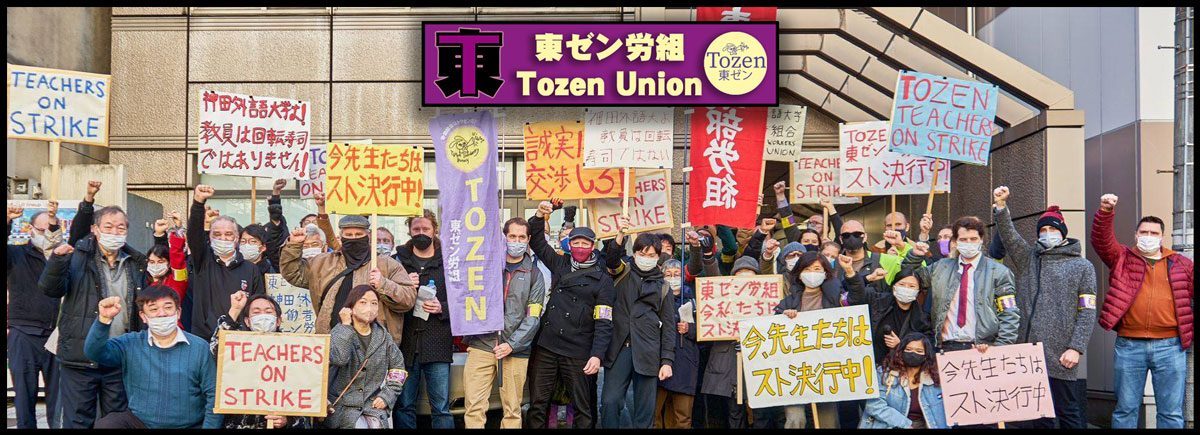Ask any ordinary person what significance Oct. 26 holds and you might find them struggling for an answer, but for many involved in Japan’s beleaguered English teaching industry, it was the day the nation’s premier operator fell into administration and took much of the rest of the industry with it.
This year, Nova marked its fourth anniversary of operation following restructuring, and while Louis Carlet, executive president of Zenkoku Ippan Tokyo General Union (Tozen), admits it has been a long time since the collapse, he feels that the English conversation school (eikaiwa) industry as a whole “continues to convulse.”
Carlet is no stranger to the Nova saga, having been a spectator to it from the start of the chain’s public troubles in early 2007 and the eventual bankruptcy to Nova’s restructuring by Nagoya-based holding company G.Communication in the following years.
Although the media at the time asked Carlet for his thoughts on a seemingly daily basis, he admits it was difficult to get a historical perspective on what impact Nova’s collapse would have on the industry.
“One thing I did say during several press conferences was that the business model of profits over people does not work in the long run,” he says.
Once the Ministry of Economy, Trade and Industry became involved in investigating Nova’s business in 2007, the eikaiwa chain seemingly went from a fully operating business to bankruptcy within months.
During the course of Nova’s downward spiral, the atmosphere at branches took a slightly unusual turn as Nova management, or more specifically then President Nozomu Sahashi, tried to allay instructors’ concerns about delayed payments through bizarrely worded faxes, which instead seemed to have the opposite effect.
Thinking back to those faxes, often referred to as “Jesus memos” for the spiritual metaphors and starry-eyed rhetoric Sahashi utilized, Carlet describes them as “creepy” and says they gave employees the feeling Sahashi “was losing it,” which only further lowered the confidence of everyone involved.
Nova finally collapsed under the weight of its debt on Oct. 26, 2007, though while many knew it was coming, Carlet admits he was surprised to hear that the Nova board had conducted a coup d’etat by holding an emergency meeting without Sahashi in order to fire him and immediately apply for court protection from creditors.
Immediately after, the National General Workers Union (NGWU) [sic] found itself thrust into the difficult position of providing support and advice to Nova’s entire foreign workforce, in addition to dealing with a surge in membership in the hundreds.
The labor group managed to organize the instructors into rallies and visits to the Labor Standards Office, as well as holding seminars to explain the complicated system behind the government’s guarantee that 80 percent of unpaid wages would be repaid in the event of bankruptcy and how to apply for unemployment benefits.
“We did a public relations campaign to make sure everyone in Japan knew how bad it was for unpaid teachers, some of whom had trouble getting food,” explains Carlet, who was then deputy secretary general of NGWU’s Tokyo Nambu branch.
The NGWU attempted to assist instructors in this predicament with a highly publicized “Lesson for Food” program, where private students would compensate an instructor for an impromptu language lesson with a meal instead of the normal tuition fee.
While the union’s intentions behind the initiative were noble, Carlet admits in hindsight that it had the “unintended consequence of lowering the private lesson market rate.”
One senior instructor in western Japan, who chose to remain anonymous for this story, has worked continuously with Nova since years before its restructuring, and witnessed the scaling down of Nova firsthand.
“The old Nova had a hierarchy of supervisors who conducted training and evaluations, called titled instructors, and gave day-to-day feedback on teaching performance,” he explains. “They did not always do the job very well, but as G.education hired so few people, there hardly ever seem to be any lesson observations anymore.”
The instructor describes the current Nova management as “extremely poor,” and while it was not especially good at the old Nova, he feels that the people running the branches now are “much worse.”
“There needs to be a proper system for training and supervising teachers, and while the various companies running Nova want the teachers to get more involved in sales, they have no good ideas about what they want the teachers to do,” he says.
While Nova has managed to pull off the massive feat of restructuring, it is clear that the eikaiwa industry has suffered significant contraction following the collapse, with competing language chain Geos going bankrupt in the middle of 2010.
“The economy is bad and young people’s employment is so unstable that most people have little extra time or money to spend learning a foreign language,” Carlet explains.
Looking to the future, Carlet does not foresee things improving drastically for the eikaiwa industry as a whole, but sees some opportunity for smaller operations.
“To recover, the eikaiwa industry would have to overhaul its business model and take language learning seriously as an educational exercise, treat teachers as long-time careerists and, ultimately, charge more,” he says.
http://www.japantimes.co.jp/text/fl20111220zg.html
